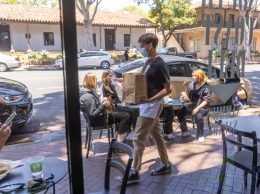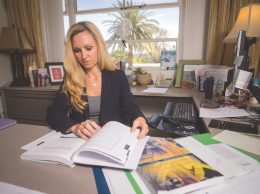If you’re confused about how to reopen, you’re not alone.
On June 2, Santa Barbara County community leaders led a webinar to help clear up confusion about reopening and answer questions business owners had. Approximately 350 people registered for the webinar, and when it started there were about 100 attendees.
The event was an example of similar programs happening up and down the Central Coast, where the entire region is in the extended version of Stage 2 reopening.
More than 1,700 businesses in Santa Barbara County have filed their online self-certification to reopen, including almost 600 restaurants and more than 350 retail stores. Part of the self-certification process for businesses in Santa Barbara County is reading the Reopening in a Safe Environment, or RISE, guide, which includes industry-specific information about what businesses should do in order to reduce the spread of COVID-19 at their locations.
Those guidelines are being updated weekly, as the state releases additional guidance, so business owners will want to check the document even after they’ve certified their business and reopened.
It doesn’t cost anything to certify a business, and Santa Barbara County Assistant CEO Nancy Anderson asked people to only certify what they were reopening. If a business has multiple parts, like a museum with a gift shop, the business owner should certify the gift shop that is allowed to reopen — not the museum, which is still not allowed to reopen.
That means some businesses may have to reopen multiple times. And while Santa Barbara, Ventura and San Luis Obispo counties are all in extended Stage 2, it’s unknown when the state will allow counties to enter into Stage 3.
The county is also using RISE ambassadors to go to each of the reopened businesses to see how businesses are doing. The ambassadors aren’t code compliance officers, Anderson said, but are there to help make sure businesses are following safety standards and to help clear up any questions business owners might have about RISE.
“The whole intent is to make sure we know who is open, who is not and that we’re doing it in a safe way,” Anderson said.
Businesses also need to have their reopening plans readily identifiable — not necessarily to the public, but if a RISE ambassador visits, the plan should be easy to find and retrieve.
Anderson also spoke about the Small Business & Community Partnership Enhancement Program, which businesses can opt into. Through the program, businesses can apply to use public right-of-way areas like sidewalks, extending the amount of space they have to conduct their business.
Business owners have to apply for a no-cost encroachment permit, which will include a site plan indicating the potential encroachment into the right-of-way. Business owners also need to attach a certificate of insurance in the amount of $1 million naming the County of Santa Barbara as additional insured.
Other community leaders, like First District Supervisor Das Williams, also spoke during the webinar. He noted there is less local control over reopening than there is over other business issues, and asked owners to reach out to their representatives about reopening.
“If there are some things that don’t make sense — and there are some things that don’t make sense — let us know,” Williams said.
He pointed to children’s day camps, which are allowed to reopen under Stage 2. Unfortunately, the state has yet to release guidance about children’s camps, so while some counties have allowed it, the official state line is to not let them reopen unless they are in association with a child care facility.
Williams also offered his support for businesses in the area while recognizing the difficulty of navigating through the pandemic.
“We have an existential threat to business,” Williams said. “We have an existential threat to people’s lives, and people are slipping deeper into poverty.”
• Contact Amber Hair at ahair@pacbiztimes.com.






 Print
Print Email
Email

















